The Pool of Siloam is best known from the New Testament where Jesus sent the blind man to wash and be healed (John 9:7-11). In the Hebrew Bible this pool is mentioned as the “waters of Shiloah that flow softly” (Isaiah 8:6). The waters originated from the Gihon Spring, but that was apparently forgotten in the 1st century as Josephus calls this pool a fountain. In the last couple of decades it was thought that the Pool of Siloam was the stepped pool that has become a major tourist attraction in Jerusalem.
However, my friend Dr. David E. Graves alerted me to a recent article by Nathan Steinmeyer in Biblical Archaeological Society’s Bible History Daily called “Rethinking the Pool of Siloam.”
“Where is the Pool of Siloam? If you visit the City of David Archaeological Park in Jerusalem, you would easily think it is the large pool formerly known as Birkat el-Hamra, that has been excavated since 2004 near the southern end of the ridge. However, Israel Antiquities Authority archaeologist Nahshon Szanton believes this identification is almost certainly incorrect. Publishing in the journal ‘Atiqot, Szanton instead identifies the true Pool of Siloam with the more traditional Pool of Silwan, which is located only a few hundred feet to the north of Birkat el-Ḥamra.”
Szanton suggests that the square colonnaded pool that was excavated by Bliss and Dickie in 1896, should be identified as the Pool of Siloam mentioned by Josephus in War 5.140 as the “fountain of sweet and abundant water”, and that the water reservoir was Solomon’s Pool mentioned by Josephus in War 5.145.
In the context of my work at the Temple Mount Excavations, I visited the Pool of Siloam many times and studied the plans made by Bliss and Dickie, and those of Charles Warren. One of the ancient walls of this pool is still visible today.
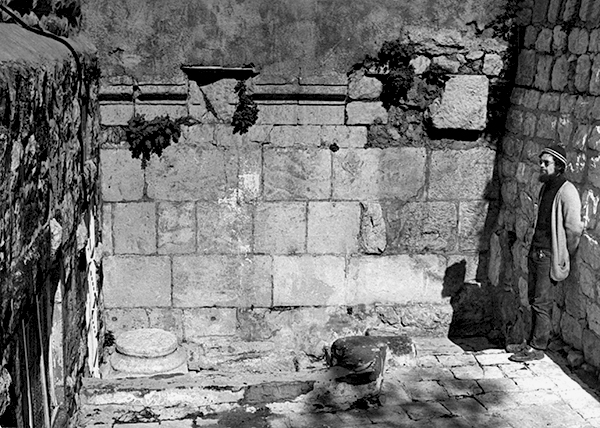
We have argued for a long time that the excavated remains of a square colonnaded pool discovered by Bliss and Dickie in 1896 had a ritual function, and that the stepped pool was a water reservoir. The Pool of Siloam was built near the exit of Hezekiah’s Tunnel. This tunnel was dug at the time of King Hezekiah to bring water to the western side of the city. He also created a huge water reservoir by building a city wall at the end of the Tyropoeon or Central Valley that also funtioned as a dam. This, in turn, made it possible for the city to extend to the west. By building a city wall round the Western Hill and securing its water supply, it became possible for the city to more than double its size.
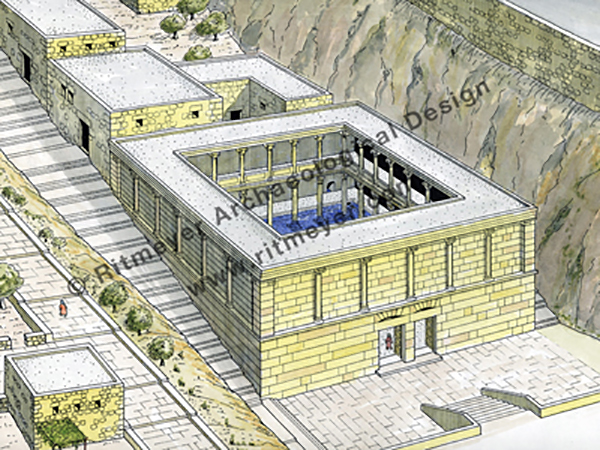
Many mikvaot – Hebrew for ritual baths, mikveh in the singular, – have been excavated in Jerusalem and elsewhere in Israel. A mikveh usually takes the form of a stepped pool carved out of the rock with a small dividing wall built on the upper steps. The more elaborate mikvaot had double entrances. The purpose of this was to allow users of the mikveh to descend on one side and, after immersion, ascend on the other side, thus preventing contact with those who were not yet purified.
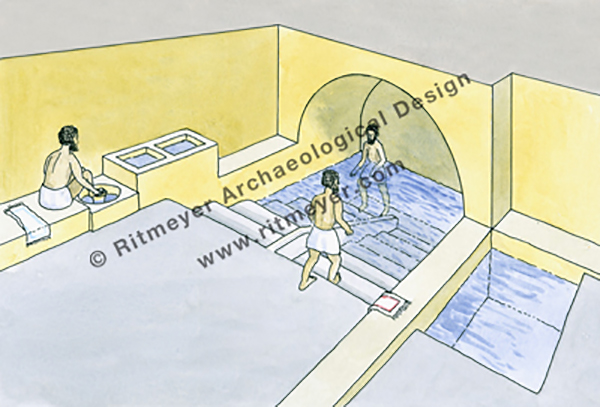
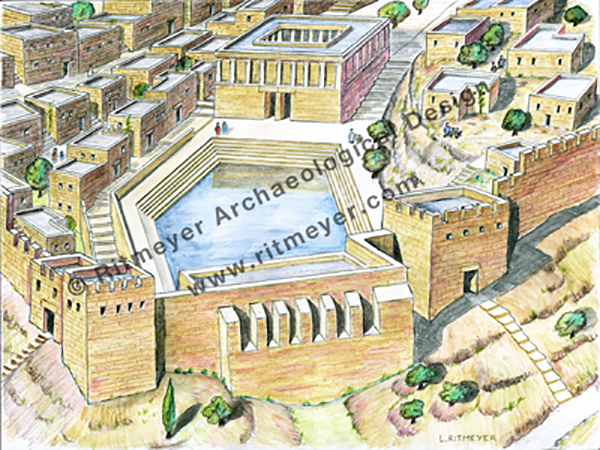
Although we had incorporated the excavated steps all along the three walls of Birkat el-Ḥamra in our reconstruction drawings, only the steps on the east (right in the drawing) have been excavated. Since last year the whole of the area at the lower end of the Tyropoeon Valley has been excavated, but none of the proposed steps on the west have been found.
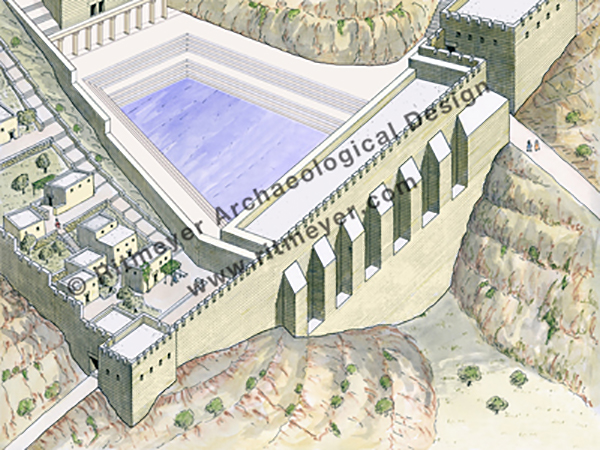
The absence of steps on the west strengthens our idea of a water reservoir with steps on one side only. Other water reservoirs in Jerusalem, such as the Pools of Bethesda and the Pool of Israel could be accesses from one side only.
Strabo wrote that Jerusalem was a “city well-watered within, but desert outside” (Geography 16:2:40). The history of Jerusalem can be presented in many ways, but the most critical factor in understanding the development of the city is based on the capacity of the ancients to provide its inhabitants with water. Water was the central resource that shaped the fortunes of the city. Jerusalem began around the Gihon Spring, after which many new water systems were created throughout the ages in order to keep pace with the growing population of the city.
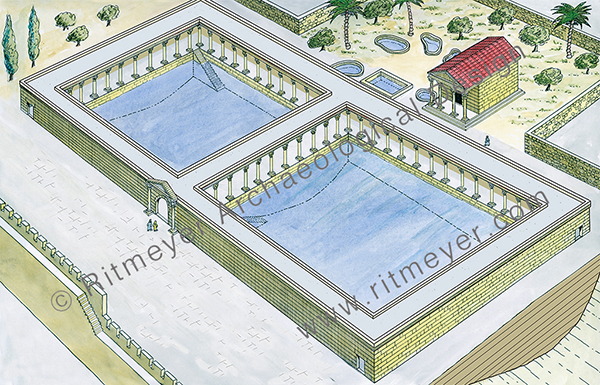
I don’t agree with Nahshon Szanton that this water reservoir could have been used as a swimming pool. Swimming was more likely used as a method of crossing rivers for example rather than for recreational purposes.
The sanctity of the Pool of Siloam was recognised in the Byzantine period by the building of a church next to the pool. The same happened at the conclusion of the excavations by Bliss and Dickie when a mosque was built over it.
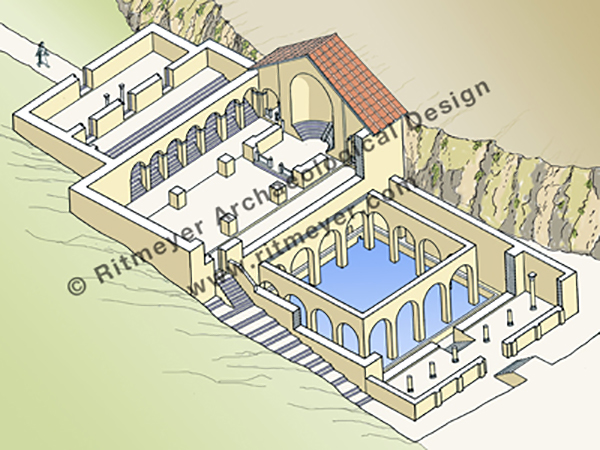
The construction of water reservoirs was necessary for making life in Jerusalem possible. No wonder that in Scripture, water is referred to as the water of life (Revelation 21:6; 22:1; 22:17).

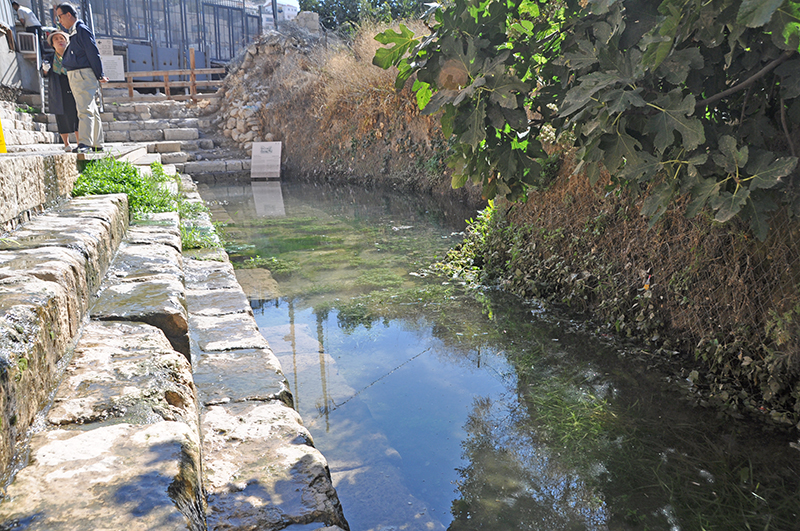
Your posts are only showing up in my alerts and not my “Reader” in WordPress.
Wanted to reblog your post but your site didn’t let me. You are losing me.
Don’t know what the problem is, as many others have reblogged my post
Your post finally showed up in my feed, I had to scroll back to find it. When your alert showed up in the notifications I wanted to reblog your post but had no way to do it. I went to the address bar and copied it to put it in a WordPress post but it wouldn’t let me with the message: “refused connection.”